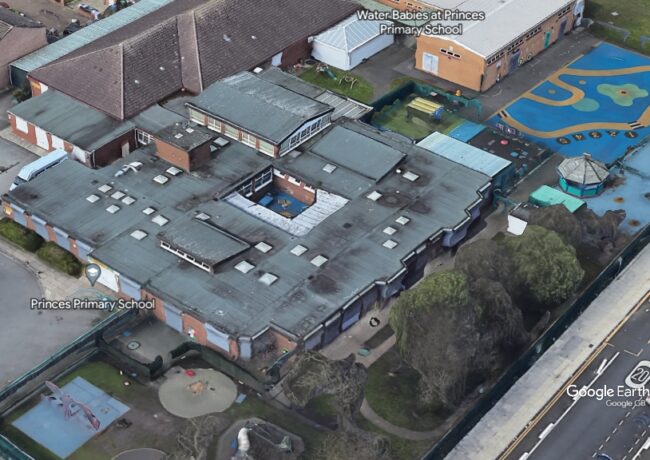Roundtable: Liverpool Market Matters
 The office market, inward investment, visitor economy, enterprise zone and local politics were on the agenda at the Liverpool roundtable with Claremont Group Interiors .
The office market, inward investment, visitor economy, enterprise zone and local politics were on the agenda at the Liverpool roundtable with Claremont Group Interiors .
Place North West gathered ten of the city's leading property professionals at the new Women's Organisation centre in the Baltic Triangle area for a discussion about the city's commercial property market.
In attendance were:
- Paul Unger, editor, Place North West
- Peter Eustance, head of valuation, Keppie Massie
- Andrew Lovelady, finance director, Ethel Austin Properties
- Charles Ardern, head of Liverpool, Knight Frank
- Darran Lawless, development director, Muse Developments
- Adam Hall, managing director, Falconer Chester Hall
- David Sayer, director, GVA
- Jenny Douglas, head of city centre and urban design, Liverpool Vision
- Tim Frankland, director, Claremont Group Interiors
- Clive Bleasdale, partner, Weightmans
- Alan Pugh, partner, Hill Dickinson
Offices
Darran Lawless, development director of Muse Developments, started off proceedings with a summary of enquiry levels at St Paul's Square. Muse, as part of the English Cities Fund joint venture with Homes & Communities Agency and Legal & General, is currently nearing completion of the third and final office building at St Paul's.
Lawless said: "There are enquiries out there and some very good quality ones. Not for the whole building in one but we have terms out on around 30,000 sq ft to 40,000 sq ft, both to existing and also new inward investor opportunities, which is very encouraging."
Take-up for Liverpool city centre offices was extremely low last year at around 200,000 sq ft. Participants said the increased retail and leisure offer in Liverpool owing to new projects such as Liverpool One and the Arena & Convention Centre Liverpool (ACC) present the opportunity for the city to be "seen as a genuine candidate" as a big financial centre, as staff are becoming more vocal about where they want to go, which bodes well for Liverpool.
Lawless added: "If we are looking at genuine inward investment opportunities, Liverpool has been enjoying a higher profile than it has done for years. That's down to the Grosvenor scheme, for example – bringing that retail provision on during the depths of the downturn, it's been a phenomenal success. In terms of the profile and quality of operators, the leisure and hotels, there's a momentum that Liverpool is enjoying now that it has been enjoying for five or six years. It's not happened overnight but it's all down to having the right stock in the right location at the right price. Liverpool has the benefit of having something for everybody. Whether it's our building or good quality refurbs across the city. At the moment the cards are still held by occupiers. It will probably be 12 months down the line before we see that point changing in favour of the developer or investor."
Local politics
It was agreed around the table that the public and private sectors work better together these days in Liverpool than in the 1980s and 1990s. The Labour council leader, Cllr Joe Anderson, has brought added vigour to the local authority since taking up his post in May 2010.
David Sayer, director of GVA, said: "We've been working on a scheme in south Liverpool and it fell across a period when the politics of the city changed. We noticed instantly when Joe Anderson came into the chair, that the reception was different. He's opened doors, put heads together and put us in contact with the right people. There's been a big difference."
However, Anderson faces a dilemma as he's got a political hat to wear as well as his pro-regeneration hat and they possibly don't sit together.
The question was raised of whether Labour in Liverpool should be marching against the government spending cuts as it has. There is a danger that Whitehall views Liverpool as slipping back into its 1980s militant ways.
Tim Frankland, director of Claremont Group Interiors, commented: "It would be good for Anderson to de-politicise himself to some extent. His responsibility is to help drive Liverpool forward. It's not just about being seen to look after the little man, for the want of a better phrase, it's about helping people to generate business and get people to come to the city. My daughter came to university here and loves this city but before she came here she had a view of it that wasn't 100% positive.
"There has historically been negativity about it and we have to be careful about that. I do more business in Liverpool than Manchester or Leeds. Manchester is very cliquey, Liverpool is very open. I enjoy doing business here because the city is very honest. As a non-Liverpudlian, these are the things you ought to talk about. Not just the golf courses and where to live and 'it's cheaper than south Manchester' but 'it's a good place to do business' and you've got some great building stock. If you look at the architecture here it knocks Manchester and Leeds into a cocked hat. If you talk to people at Royal Liver, they would never contemplate moving out of that building because of the heritage and the address. Those are the things you ought you ought to shout about."
Lovelady responded: "Going back to the perception issue, we beat ourselves up too much about our own image as Scousers. Things stop at the 1980s. In the '60s this city was fantastic. Our heritage didn't start with the bad times of the 1980s. We need to get over that baggage and shout about the great things."
Peel and the Mersey Waters Enterprise Zone
Peter Eustance, head of valuation at Keppie Massie, spoke for the group when he said "it's difficult to know how the Enterprise Zone will pan out because they had mixed success back in the 1980s. They had rate holidays but the saving grace was the industrial business allowances and rates allowances for the length of the EZ, which was longer than now, which is only five years this time. We're in a climate of difficult development. The point about space being available now from the pre-crash days, it's very difficult to have the dynamics that work for new property development at the moment."
There are several problems facing the market that the government hopes EZs will tackle: developers that bought at the height of the market expect a certain value to be released from their property, local authorities that haven't got any money and banks that aren't lending. The EZs help but if there is no cash for infrastructure and utilities to open up the sites or major prelets to unlock bank funding there will still be no movement.
Jenny Douglas, director at Liverpool Vision, said: "The challenge with Peel is they have a 30 to 40 year plan. Over the next ten years, their planning application says they're planning to build a few buildings on Princes Dock. In reality they're only going to achieve a bit of that within the time period of the EZ and there is a whole other part of the city centre, there's the commercial district once St Paul's Square is done, Pall Mall and other sites waiting to be developed. I'm sure if Peel wants to use the facilities of the EZ to bring forward their development they will but we need that zoning to be advantageous for other parts of the city centre that aren't in the zone."
Lawless said: "It's a missed opportunity in regard of the boundary for the EZ. I understand the logic in that the government wanted to make some quite clear-cut announcement in terms of areas that would benefit and arguably would be deliverable in terms of the nature and scale of the ownership. It's no accident they've chosen plots that are in one or two people's ability to deliver and then they can argue that these are genuinely going to happen. I think, unfortunately as far as Liverpool is concerned, where the EZ has been created doesn't include the very areas that perhaps it should have done. I'm not arguing against Liverpool Waters but I think it should have been a wider remit. Potentially some of the sites that are capable of being delivered sooner rather than later within, for example, the central business district and Pall Mall, would potentially have given more confidence for bringing them forward because of the taxation advantages and rates holiday. The fact it doesn't have that benefit then gives people reason to doubt whether I'm on a level playing field here. If I look at Pall Mall will I be faced with competing with a scheme only half a mile or a mile down the road that will have five year rates holidays? I think as far as Liverpool's concerned there is a dilemma there."
Lovelady added: "In Dublin, the tax breaks around the new financial services district just sucked everything into there because there was ten years' rates holiday, you got 150% rebate – they actually gave you money to go in – it set back a lot of the more historic stuff that needed to be developed in Dublin."
It could be, said Douglas, that rather than envisage the next stage of the commercial district being Pall Mall it is in fact Princes Dock.
Inward investment and the Liverpool embassy
The group was encouraged by the opening of the 'Liverpool embassy' in London, "getting people to think about Liverpool and the opportunities there".
The majority of key decision makers are based in London and getting them up to Liverpool can be difficult, relying on one-off days such as the Open Golf or Grand National. But the embassy is there for people in the City of London to go to in a lunch time or after work.
There is a limited funding cycle for the embassy which runs until the summer but there was a consensus around the table that it should continue.
Despite great strides being made, there is less tolerance of Liverpool than other regional cities; it doesn't have to do much as a city to get negative press. It takes a long time to change people's external perceptions.
The wise property agents would pack the CEO of an external client in the car, show them the houses they could live in around Liverpool city region, the golf courses they could play at and sell it that way.
There was mention of the manufacturing of the new Land Rover Evoque in Liverpool and the launch being used as a way of promoting the region to other manufacturers.
Clive Bleasdale, partner at law firm Weightmans said Liverpool is too reliant on the churn of professional firms moving within the city; there have been very few large inward investors taking office space over the past ten years.
Andrew Lovelady of Ethel Austin Properties made the point that the churn of existing Liverpool occupiers is not necessarily a bad thing. "We should acknowledge it's good because it means there's organic growth. Talk about SMEs – I'd rather have more Mediums than Smalls. You want small businesses to grow so they can move from a 2,000 sq ft shed to a 5,000 sq ft shed or whatever."
Alan Pugh of Hill Dickinson said he works with clients who have grown during the recession and cited an electrical contractor that started four years ago and now has a £5m turnover and looking to reach £8m in the next couple of years.
Visitor economy and leisure
Architects Falconer Chester Hall have ridden the wave of investment in Liverpool's tourism sector with a large number of hotel projects. Adam Hall, director of FCH, said: "I think there is still a way to go. Our practice had focused on residential work and I always felt there was a bubble that was about to burst and it did. And I feel as though we're possibly in that bubble with the hotel sector now and I think there will come a point when we're at saturation level. We're finding that the latest hotel work is more at the budget end, if there's going to be any more growth."
FCH's recent work includes the new Days Inn above James Street station, Hotel Indigo on Chapel Street and the Ibis in Dale Street.
Hall added: "There must be close on 700 to 800 beds within just the ones that we're doing."
Tourism growth has been helped by European Capital of Culture in 2008 and by the success of ACC Liverpool, which opened in the same year, the development of the waterfront, acclaim for Liverpool One and investment in the airport. Occupancy rates have remained high despite the overall capacity increasing with new hotels.
Traditionally, the city has been quieter during the week than at weekends. The announcement of the extension to the convention centre should boost mid-week business visits further.
Jenny Douglas, director of Liverpool Vision, said: "What's interesting is the occupancy levels are increasing and are higher than in 2008. Although the number of rooms is increasing due to new hotels opening, we are continuing to fill them. So the visitor market is growing and I'm sure has got a huge amount of scope to continue to grow. The problem is revenue per available room, which has stayed quite low."
Hotel schemes are continuing to attract developers and investors looking at Liverpool, said Charles Ardern, partner at Knight Frank: "It's interesting to hear around the table about perception of the arena. We had some guys up from London, they were massively positive when they came to realise what the offer is and the potential there. They're going to speak to some occupiers, potential people that will come in. It comes back again to the hotel side. But within the Baltic Triangle, it's to do with the arena, it's massively positive. But it's that old problem of trying to get people to come up here and see the potential of what Liverpool has to offer."
The Women's Organisation and Baltic Triangle
The roundtable was held in the new building for the Women's Organisation on St James Street in the Baltic area of the city centre. The centre, funded by the European Regional Development Fund, will provide cheap work space for women starting up their own businesses alongside training and support services.
Liverpool Vision has been among the regeneration agencies trying to transform the area. Douglas said: "We were involved in helping the Women's Organisation decide where to locate. They were keen to come to this area as they thought their investment could make quite a difference. Hopefully it will do, and it will bring more people into the Baltic Triangle. This area has enormous development potential and starting to pick up again after stalling in the recession."
Douglas explained: "The area is very much changing. If you look immediately to the north there are lots of refurbishment and newbuild residential schemes, particularly the big mixed use scheme that Jonathan Pritchard has done, which includes Hampton by Hilton, that was delivered during the recession, he achieved funding and prelets. But mainly in the 2004-2007 period there was huge speculation in this area and lots of permissions granted for eight, nine, ten storey residential developments, mirroring what's happened between here and retail area. Those permissions have now lapsed and it will be interesting to see what happens.
"There's a sense that as more people have come into the area on the creative side, they'd like to see the area go in the direction of the Meatpacking District in New York, or Shoreditch or Hoxton in London – that sort of mixed use creative feel. It will be interesting to see how it works through. On one hand we have local creative and digital businesses wanting to invest in quirky hotels, restaurants, floorspace for creatives, that's how they want it to develop. On the other hand there are more traditional people looking to invest and build residential, so there are a couple of planning permissions for eight or nine storey residential being granted in the last 12 months. So the area is on a bit of a pivotal point at the moment."




